Cal Fire, US Forest Service working towards containment
By Ken Magri
Now burning through its second week, the Park Fire has already become the fourth largest wildfire in California’s history. More than 6,500 firefighters, 850 vehicles and 50 aircraft have been thrown into the fight. The fire is now present in four counties – Butte, Tehama, Plumas and Shasta.
As of August 4th, the fire has burned over 400,000 acres, taken 569 structures and is at 31% containment. Cal Fire and the US Forest Service teamed up with fire departments across the state to create the nation’s largest current fire fighting force for this incident.
On July 24th, a man claiming he was drunk at the time is alleged to have pushed a burning car into a gully on Upper Park Road in Bidwell Park.
A few miles south, Chico resident Anthony Gheller saw something from his home on the shoreline of California Park Lake.
“I look out and I see two Cal Fire jets flying low, right over the lake and our house,” said Gheller. “If that doesn’t send up a warning signal, I don’t know what does.”
But urged on by prevailing winds, the fire quickly travelled north and east away from Chico, heading for Cohasset and threatening to cross Highway 32 where it could then burn towards Magalia and Paradise.
The next morning, over 100 miles away in Lassen County, Westwood resident Richard Biernacki photographed an enormous smoke cloud coming towards his town. Folks in this region, where the Cascades meet the Sierra Nevada, are nervous about another wildfire coming so soon after the 2021 Dixie Fire destroyed over 950,000 acres across the entire mountain range.
“The sky went purple/black,” said Biernacki, who evacuated for six weeks during the Dixie Fire. “There is still so much dense growth up the mountain side,” said Biernacki, “but no undercurrent of alarm here yet.”
The fire attacks Cohasset
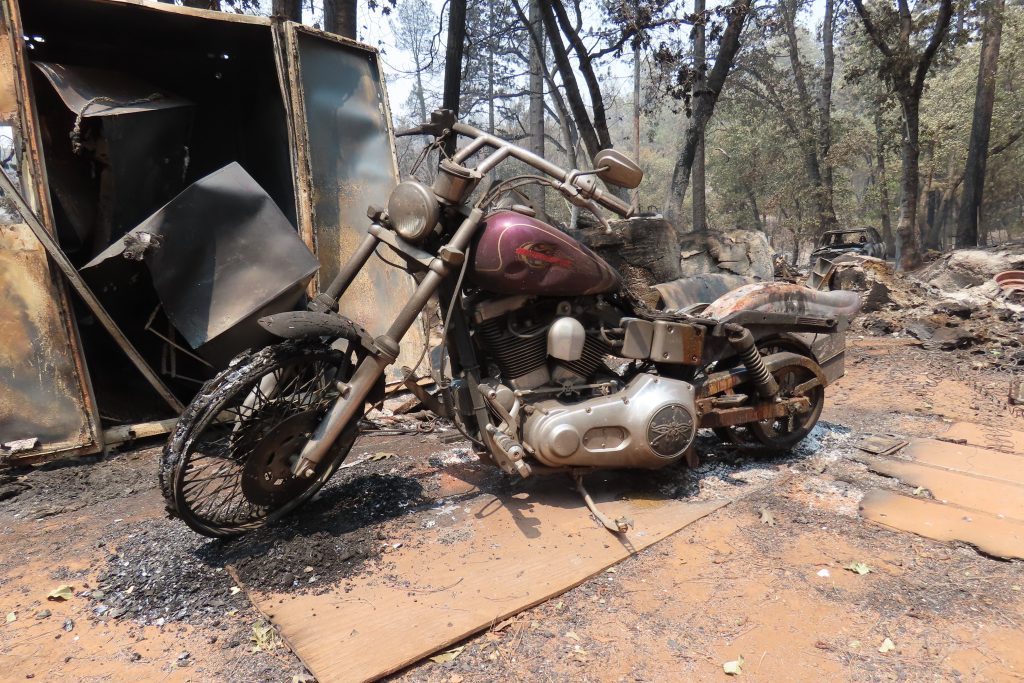
“I’m worried about my place, but I’m more worried about my Harley out front,” said Cohasset resident Brian Bowles, standing by his car with his dog, Diamond, at the Neighborhood Church of Chico evacuation center.
Bowles had to evacuate on the first day of the fire, when two police officers knocked on his trailer door to say the flames were coming. After helping to notify others about the approaching fire, Bowles told a harrowing story of towing a neighbor’s car into Chico along the only safe route out, a private logging road owned by the Sierra Pacific Industries (SPI).
With Cohasset Road blocked by fire, SPI needed to unlock their gates to create a safe escape route before escorting the townspeople through. Bowles’ neighbor and his wife had run out of gas. “Everyone was just driving around them, so I had some chains and I pulled them,” said Bowles.
The fire burned through Cohasset with swirling gusts of flames, taking out most of everything while leaving a few spots virtually untouched. The landscape is covered in grey and white ash. Yet after five days, deep holes where trees used to be were still smoldering.
When asked what he was being told by authorities about returning home, Bowles answered, “Jack squat.”
He added, “They treat Cohasset like the bastard ugly red-headed step-child of Butte County.”
The News and Review was able to get into the tiny foothill town and notify Bowles that his Harley-Davidson survived the event, even though its tires and electrical wiring completely melted in the heat.
The fight for Highway 32
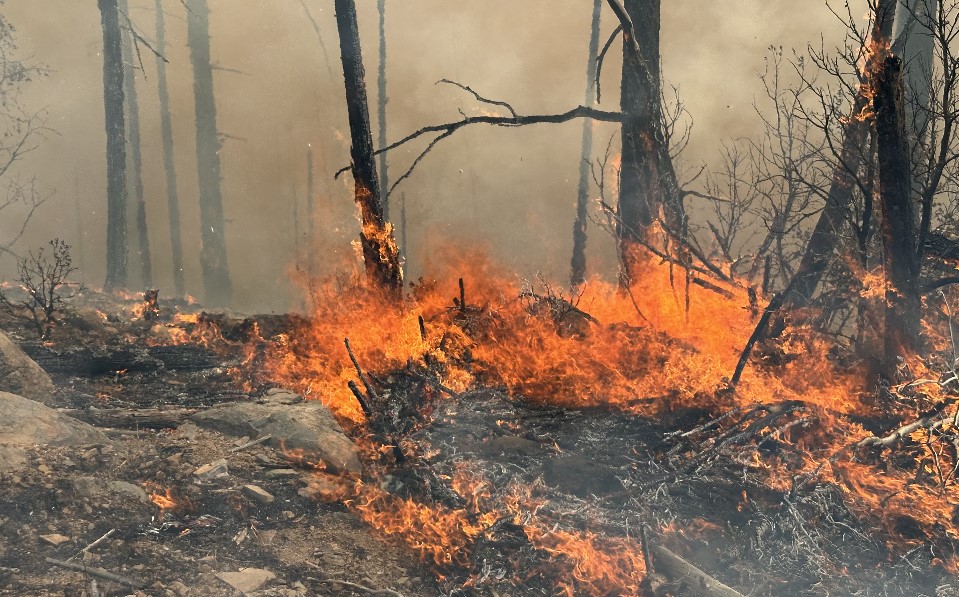
In a furious battle that included air tankers dropping red fire retardant right across the road, firefighters were able to hold the line on the west side of Highway 32 near Forest Ranch. But days later, crews were still positioned every mile or so, extinguishing smoldering tree stumps with fire hoses. Their type-one vehicles, called “pumpers,” came from San Francisco, Davis, El Centro, Napa, Mountain View, San Diego, virtually all over the state. Crews mopped up inside the smoky burn scar while standing watch for any flare ups that might cross the highway and threaten the east side again.
After the fast-burning chaparral and ground fuels burned out, the fire’s energy focused on hard-to-access areas of tall timber. A new “L-line” was established from staging grounds at the Old Gurnsey-Deer Creek Bridge down into the Ishi Wilderness, a remote canyon between Mill Creek and Deer Creek.
North County Battalion Chief Ryan Frederick gave detailed instructions on the proper route to three truckers hauling bulldozers ten miles down into the canyon. The truckers were concerned about getting lost and having to back-up on narrow dirt roads.
“That’s what we want to avoid,” said Frederick, “especially on these lateral [roads] because that could be hairy for you guys.”
More staging areas were set up along the L-line to accommodate dozens of pumpers, dozers, big-rig haulers and forestry vehicles. Water trucks drove up and down the road, keeping it wet to better control dust from moving vehicles.
The California Department of Corrections and Rehabilitation sent in busses full of inmate firefighters to work the active fire line. The up-canyon winds increased in the early afternoon, and scouts drove along the L-line to monitor a new spot fire that flared up south of Mill Creek Resort.
Chester braces for another threat
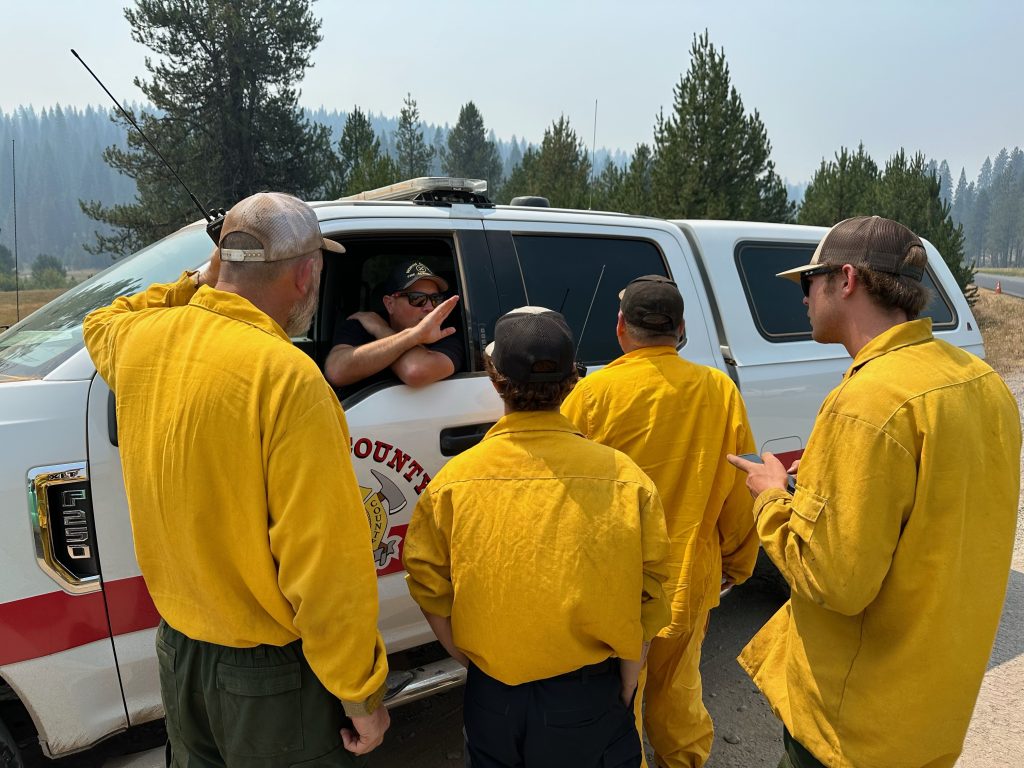
Along Highway 36, the fire jumped the road west of Mineral and headed north towards Manton. Guard rails collapsed after their wood posts burned out from under them. Summer campers were evacuated from Lassen Volcanic National Park as workers rushed to save artifacts in the historic Loomis Museum.
Despite an enormous burn scar created by the Dixie Fire, there remains a path through which the Park Fire could reach the volcanic park’s western edge to the north, or move to the east and reach Lake Almanor. So more big rigs and large forestry vehicles (some covered in red fire retardant) were parked at a huge staging area west of the Highway 32 junction.
On July 31, nervous residents of nearby Chester gathered at the fire department to be updated on possible evacuation orders. They were assured that ongoing road work in the area had been curtailed and would not hinder their pathway out. One resident shared his frustration about the chance of being evacuated too early and for too long. But Plumas County Undersheriff Chad Hermann mentioned the unpredictable nature of wildfires. He reminded everyone that the nearby town of Greenville completely burned down during the Dixie Fire “after the evacuation order had been lifted.”
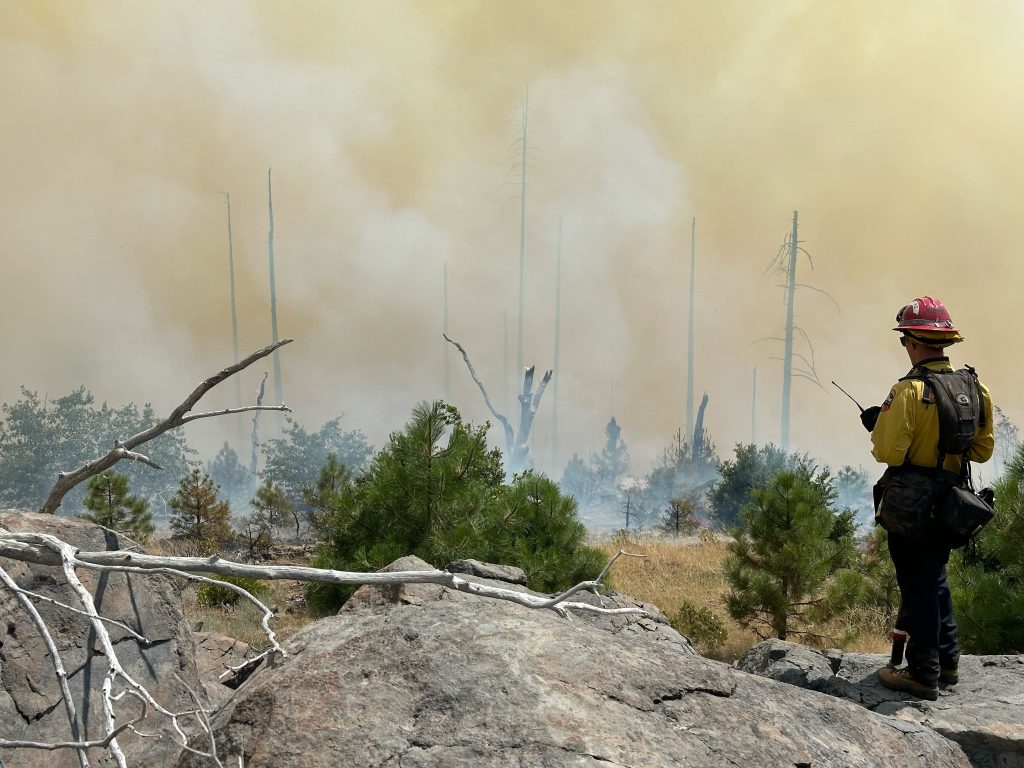
Hot temperatures and low humidity will persist this week and the fire activity is expected to increase. But there has been progress with infrastructure repair in Cohasset. At Sunday morning’s incident briefing, Cal Fire’s Jed Gaines urged crews to complete their mop-up activities along Highway 32, noting that traffic control has reopened it as far north as Humboldt Road.
This story was written and photographed for both Sacramento News & Review and Chico News & Review.

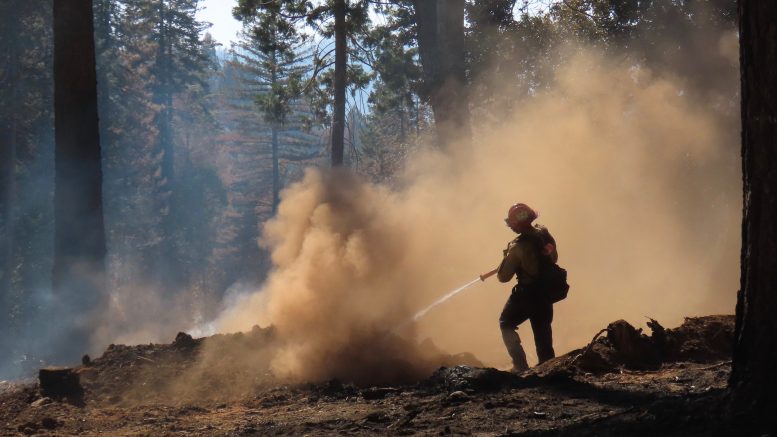
Be the first to comment on "Battle against the Park Fire continues"